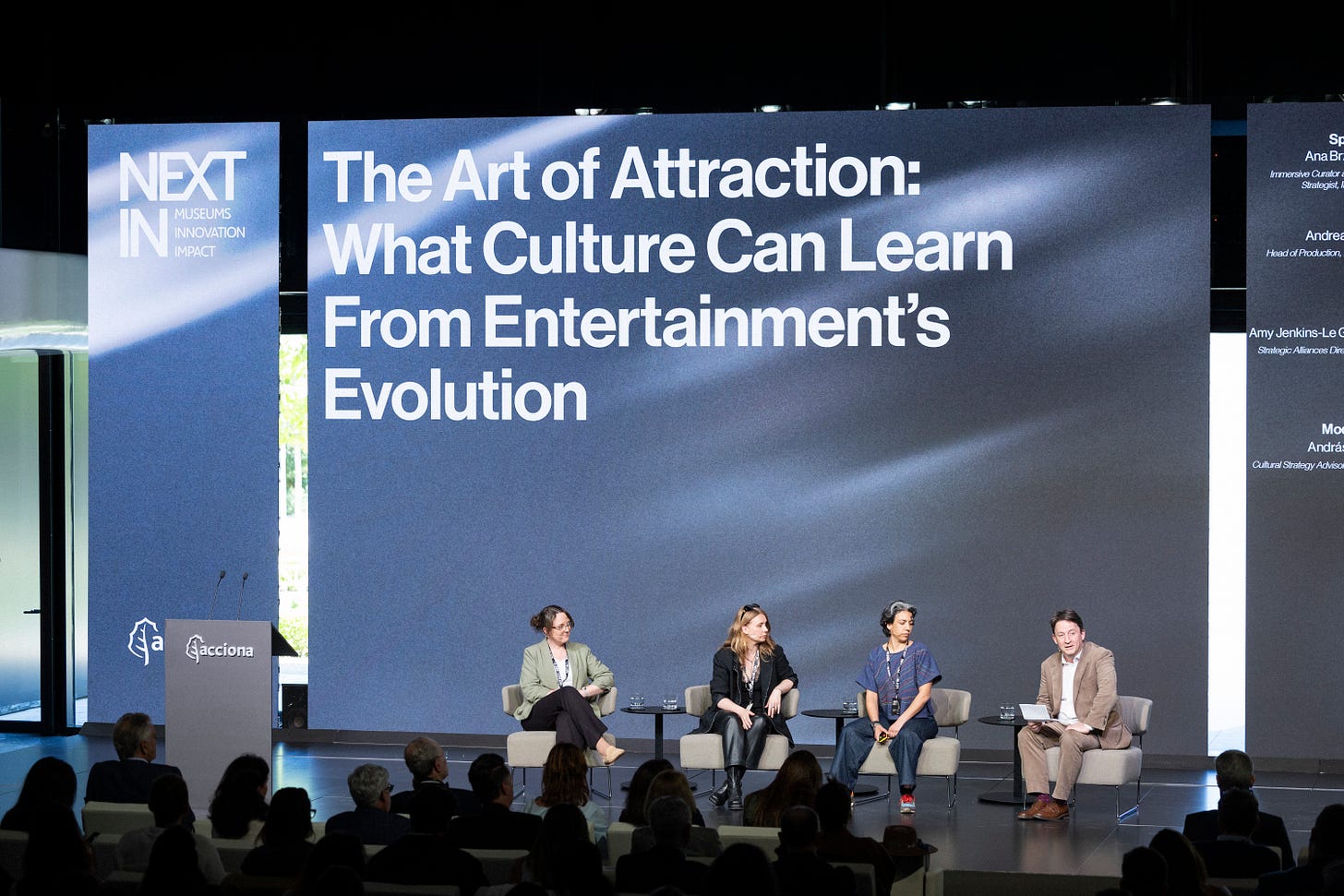People’s Playground: Immersion and the Post-Y2K Internet
On the experience economy, its role in immersive culture, and the digitally propelled shift shaping the first quarter of the 21st century.
This note is fragment of a longer exchange with cultural strategist András Szántó, inspired by some of my recent findings and experiences — a collaboration with one of my favorite London art centers; a crazy party at Fotografiska Berlin, with hundreds of people queuing to enter the show late into the night (evidence below); a great museum conference in Madrid called Next In Summit by Acciona Cultura; and an online talk with
and , moderated by (link below).I was on a train from Berlin to Strasbourg — terribly delayed, but it was a beautiful sunny day. As we slowly moved through the green fields of central Germany, I was listening to Kyle and Yancey talk about the Internet and the creative culture of the 21st century like no one else can. I’m not sure I’ve heard something equally inspiring since perhaps Rhizome’s 7x7 or one of MoMA’s R&D salons. Do check it out if you can.

Immersive means Audience-First
We have not seen many moments in the history of Western culture, and more specifically its arts organizations, when at the very center of the system there was an audience (as a collective or as a set of individuals) and not the object of the creative practice: art collection, live performance, music score.
Today we put the audience at the heart of the “cultural experience,” which often causes outrage of the gatekeepers in many conservative or systemically restrictive structures. But that process seems inevitable, at least in the current socioeconomic landscape, and organizations that try to ignore it may need to correct their approach to stay relevant — unless they operate within regime-governed countries where society is deprived of making free choices.
This is not a process that, in my opinion, started in the arts and culture sector but it is reflected in it in a powerful enough way that we can’t simply assume it will disappear as easily as it happened. When you look at how frequently the word immersive is used by serious art organizations, it becomes clear that they recognize that this is more than just a word they feel obliged to use, it’s what audiences expect.
(people queuing to enter the opening party at Fotografiska Berlin last week)
If audience-centric approach is what lies at the core of the popularity of what we call “immersive” art and entertainment (I use immersive as an umbrella term for spatial and participatory digital experiences), the same principle is reflected in a wider phenomenon that we call “the experience economy,” which organizes a lot of the thinking around retail, services, and various consumer offerings from fashion, gastronomy to tourism. People don’t purchase products; they pay for experiences. When you look at trend reports each year (thank you, Amy Daroukakis), you can see that this is a persistent and recurring element.
People buy their way or secure access to various identities and emotional states through what designers call “user journey” or “user experience.” The application of those mechanisms may seem to belong in different orders or realms (like art, retail, and entertainment), but it is, in fact, a manifestation of the same principle. Gwyneth Paltrow taking you to a branded Korean forest and Shirin Neshat putting a 360 camera inside a warehouse where an Iranian dissident is beaten by soldiers. Even if these worlds couldn’t be more different, you are being put inside a world — and your emotional journey is the experience.
Keep reading with a 7-day free trial
Subscribe to Ana’s Notes to keep reading this post and get 7 days of free access to the full post archives.



